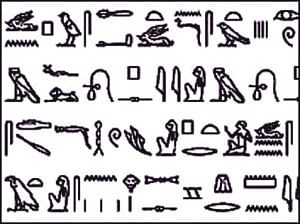Peter Rabbit gets hieroglyph tale
BBC Online
Beatrix Potter's classic children's book The Tale of Peter Rabbit has been translated into ancient Egyptian hieroglyphs by the British Museum. The translation turns the story of a mischievous rabbit into symbols of the Egyptian world, shapes and squiggles. Peter Rabbit becomes a square, a semi-circle, an ellipse and a rabbit image.The "time seemed appropriate" for the hieroglyph version, due in April, translators said, as the story had already been published in 35 languages. The British Museum holds early drawings of Peter's sister Flopsy as well as having leading experts in hieroglyphics--so decided to put the two together, a spokesperson said. The task was carried out by Richard Parkinson, a museum expert, and John Nunn, a medical researcher with an interest in Egypt. They had to overcome limited modern knowledge of the language and different literary traditions between ancient Egypt and England a century ago. Potter's landscape and wildlife would also have been unfamiliar to ancient Egyptians--who had no words for things like blackberry, gooseberry, blackcurrant and potato. "Beatrix Potter's words sometimes do not readily fall into ancient Egyptian," they wrote in the foreword. "The surviving texts provide no easy model for such colloquial phrases as 'Now run along, and don't get into mischief.'" The hieroglyphics were based on those of the Middle Kingdom, from the 21st to 18th Centuries BC. The Tale of Peter Rabbit, meanwhile, was first published in 1902 and has sold more than 40 million copies worldwide.
|

First page of The Tale of Peter Rabbit: 'Once upon a time, there were four little rabbits and their names were Flopsy, Mopsy, Cotton-tail and Peter...' |